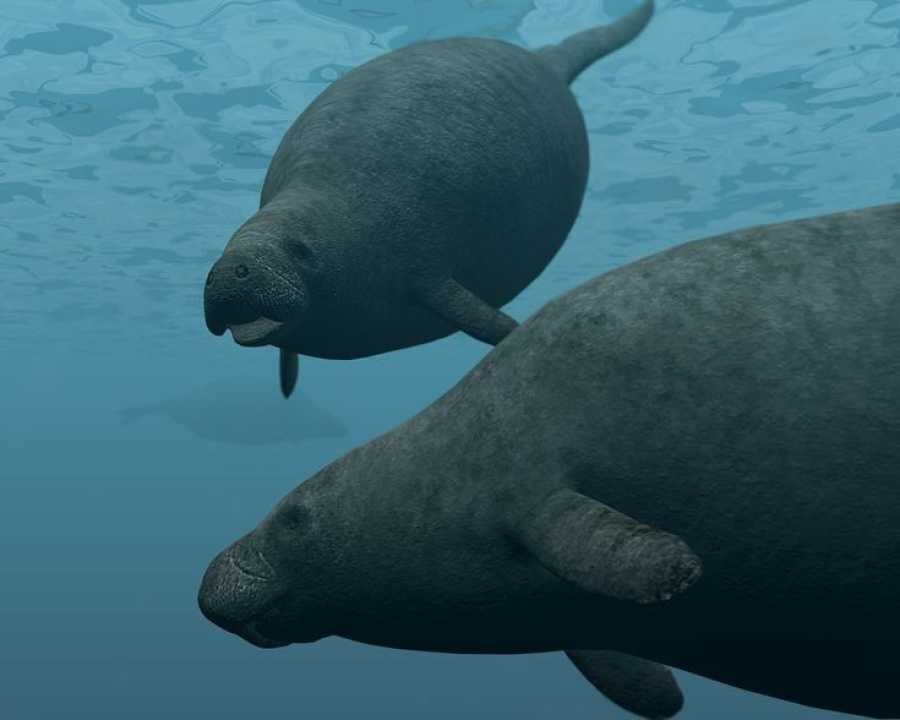Animals That Has Gone Into Extinction (With Pictures): Top 8

Extinction in the context of animals refers to a species' full and irreversible departure from the planet. This happens when there are no more living members of that species anywhere in the world. Extinction may be a natural process, but human activities have dramatically hastened it.
Animal extinction is caused by several circumstances, with habitat loss and degradation being one of the main culprits. Forests are cut down, wetlands are drained, and natural habitats are destroyed as human populations rise to create room for infrastructure, agriculture, and urban growth. This disturbs the ecosystems, on which many species depend for life.
Additionally, overusing animals for purposes such as food, medicine, and exotic pets can bring about the extinction of entire species. Aside from altering their native environments and upsetting biological balances, invasive species, climate change, and pollution all contribute significantly to the extinction of animals.
To stop extinctions, conservation initiatives like habitat preservation, captive breeding programs, and legislation against poaching and habitat degradation are made. Despite these efforts, many species are still in grave danger of extinction, underscoring the urgent need for international action to save biodiversity and lessen the ongoing extinction crisis.
Animals That Has Gone Into Extinction
- Tasmanian Tiger
- Dodo bird
- Quagga
- Steller's Sea Cow
- The Western Black Rhinoceros
- Pinta Island Tortoise
- Spix's Macaw
- Baiji Dolpin
1. Tasmanian Tiger (Thylacine)

The marsupial carnivore known as the Tasmanian Tiger was indigenous to Tasmania. It went extinct at the beginning of the 20th century as a result of hunting, habitat degradation, and disease transmission from imported species.
READ ALSO » Top 10 Plants In The World That Attracts Money Into Your Home And Office
It is significant because it was one of the few marsupial predators, and its disappearance illustrates how human activities hurt local species.
2. Dodo Bird

Native to the island of Mauritius in the Indian Ocean, the dodo (Raphus cucullatus) was a bird without wings. It had a chubby body, short wings, and a big beak. It was around the size of a turkey. The dodo had a white breast and a tuft of white feathers on its tail, along with predominantly gray feathers on its body.
A number of things contributed to the dodo's extinction in the 17th century, including human hunting, habitat degradation, and the introduction of exotic animals like rats and pigs. In 1662, the final dodo was discovered.
The dodo is a representation of extinction and emphasizes the value of conservation. It serves as a warning that even the most extraordinary and rare creatures could perish if we don't take action.
3. Quagga

An extinct subspecies of the plains zebra was the quagga (Equus quagga quagga). It was formerly indigenous to South Africa. The quagga resembled the contemporary plains zebra, but it had distinctive physical traits including brown stripes on its front half and no stripes on its hindquarters.
In the late 19th century, quaggas were hunted to extinction. The last quagga was recorded as dying in captivity in Amsterdam in 1883.
The quagga died out for a number of causes. The fact that it was hunted for its meat and hide is one factor. The destruction of its environment by human activity is another factor. Another problem for the quagga was competition from other grazing species like sheep and cattle.
READ ALSO » Best Places To Live In Florida 2024 (With Pictures): Top 10
The quagga's extinction serves as a warning about the significance of safeguarding species and their habitats. It serves as a reminder that even big animals are susceptible to going extinct.
4. Steller's Sea Cow

A huge, herbivorous marine mammal that went extinct in the late 18th century was the Steller's sea cow (Hydrodamalis gigas). The males might grow to be 33 feet (10 meters) long and weigh up to 13 tons, making it the largest sirenian (a sea mammal related to manatees and dugongs) ever reported. Although weak swimmers and having poor vision, Steller's sea cows were well suited to the chilly waters of the North Pacific Ocean. They consumed kelp and other seaweeds, and the native inhabitants of the area valued them as a source of food and oil.
European explorers found Steller's sea cows for the first time in 1741, but they were swiftly killed to extinction. A Steller's sea cow was slaughtered, the last one known.
5. The Western Black Rhinoceros

A subspecies of the black rhinoceros called the Western Black Rhinoceros (Diceros bicornis longipes) was previously common in the sub-Saharan African savanna. However, because of hunting and habitat destruction, its population drastically decreased in the 20th century.
The main factor that led to the extinction of the Western Black Rhinoceros was poaching. Traditional Chinese medicine holds rhino horns in high regard, and certain societies also employ them as status symbols. Because of this, poachers killed numerous Western Black Rhinoceros for their horns.
Another reason in the extinction of the Western Black Rhinoceros was habitat loss. Rhino habitat was lost as a result of savanna being used for agriculture and other human activities. The remaining habitat was also disrupted by the building of roads and fences, making it more challenging for rhinos to move around, locate food, and find partners.
In Cameroon in 2006, a Western Black Rhinoceros was last seen, according to records. Since then, no rhinos have been discovered despite intense searches. The Western Black Rhinoceros was officially declared extinct by the International Union for Conservation of Nature (IUCN) in 2011.
It is tragic that the Western Black Rhinoceros is going extinct. It serves as a stark reminder of the terrible effects that people may have on the natural environment.
6. Pinta Island Tortoise
READ ALSO » 9 Best Beaches In Mumbai With Pictures
The last known individual of Geochelone nigra abingdonii, his subspecies, was the Pinta Island tortoise, commonly known as Lonesome George. On June 24, 2012, he passed away at the age of more than 100.
The natural disappearance of the Pinta Island tortoise is believed to have occurred in the 1960s as a result of a number of reasons, including habitat loss, invasive species like goats, overhunting by pirates and whalers, and overfishing by humans.
Lonesome A team from the Charles Darwin Research Station's expedition found George in 1971. He was brought to the research facility on the island of Santa Cruz, where he spent the remainder of his life in captivity. Lonesome George was unable to produce healthy progeny despite scientists' attempts to breed him with females from other subspecies of Galapagos tortoises.
A reminder of the brevity of life and the value of conservation is provided by the extinction of the Pinta Island tortoise.
7. Spix's macaw

The demise of the Spix's macaw serves as a warning about the perils of habitat degradation, poaching, and the illicit pet trade. This type of macaw was formerly restricted to a tiny region of northeastern Brazil, but habitat loss and poaching caused its population to start declining in the early 1900s. The species was believed to have gone extinct by the 1970s, but in 1985 a small population was found. The final known wild Spix's macaw perished in 2000 after poachers quickly wiped out this population.
Spix's macaw's extinction represents a significant loss for biodiversity. One of the most attractive and sophisticated bird species in the world was this one. Additionally, it served as a model species for conservation initiatives in northeastern Brazil. The extinction of the Spix's macaw serves as a reminder of the value of preserving the biodiversity of our world and the ecosystems necessary for species to survive.
The Spix's macaw went extinct as a result of a variety of reasons. A big factor was habitat loss. The native habitat of the animal was destroyed for construction and farming. Poaching was another significant issue. The illegal pet trade and the desire for the feathers of Spix's macaws led to their poaching. Many bird species are seriously threatened by the illicit pet trade.The Spix's macaw's demise serves as a reminder of the significance of conservation efforts. The biodiversity of our globe must be preserved, as must the environments necessary for certain species to thrive. Along with other concerns to wildlife, the illicit pet trade needs to be addressed.
8. Baiji dolphin

A species of freshwater dolphin called the Baiji dolphin, commonly referred to as the Chinese river dolphin, thrived in China's Yangtze River. Only one species of cetacean, as far as is known, only lived in freshwater. In 2006, it was determined that the Baiji dolphin had gone extinct in everything but name; in 2017, this was confirmed.
The Baiji dolphin went extinct as a result of a variety of circumstances. Overfishing ranked among the main dangers. A major factor in regulating fish populations was the Baiji dolphin, a top predator in the Yangtze River ecology. The Baiji dolphins struggled to survive, though, as a result of the river's overfishing, which reduced their access to food.
Loss of habitat is a serious hazard to the Baiji dolphin. The Baiji dolphin's habitat has been divided and devastated by the construction of dams, ports, and other infrastructure on the Yangtze River, one of the busiest waterways in the world. Agricultural and industrial runoff contamination also posed a threat to the dolphins.
In addition to these considerations, hunting posed a threat to the Baiji dolphin. The Baiji dolphin was poached for its meat and oil despite being protected by Chinese legislation. Inadvertently, fishing gear also killed dolphins.
The Baiji dolphin's demise represents a significant loss for biodiversity and the Yangtze River ecology. The loss of the Baiji dolphin serves as a reminder that it was a distinctive and endearing animal.
